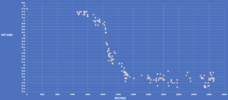I wanted to come back and report on my progress since I posted this.
Well, all BMS calibrations is precisely what it is, a calibration of the BMS estimation of the battery capacity.Question is, should I go back to charging only to 50% to save on the calendar aging or keep charging up to 90% to keep the BMS current?
It does not increase the range of the car, it just increase the range number at the battery symbol. In a few cases, if the BMS was fairly off before, the navigation function can plan the trip more precise with a slightly larger range (but it seldom would mean traveling to a supercharger further away as they mostly are placed with longer intervals than the increased range.
So, I guess the fact above makes tge choice easier?
If seeing a high range number at the battery symbol is important long term = reduce the degradation by using the low SOC strategy.
(Charge as low as possible, as late as possible).
If seeing a high range today (and in very short term), continue to BMS calib.
For me, that always did use the low SOC strategy, but use high SOC when needed I can see a slight recovery in range by using low SOC after a period of supercharging sessions which often seem to lower the NFP slightly.
I would use the low SOC strategy if i where you and I would not care if the range dropped for some reason (knowing that low SOC reduces the degradation).
I actually had a big drop for some months last summer and I did not try to “up” it with any Bms calib or so.
(Actually I think I was responsible for the initial drop by doing some really low SOC cycles to make a reversed BMS calib.
The range came back by itself, eventually)





